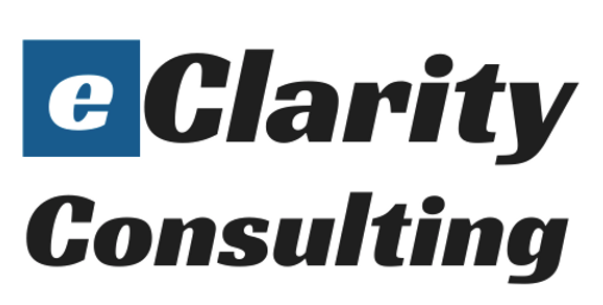Are We Finally Ready to Realise the Potential?
The wealth management industry in Australia is at a critical juncture. For over a decade (and longer), we have been predicting transformative changes in the way wealth is managed, from digital transformation to personalisation, ESG investing, and the rise of hybrid advisory models. Yet, despite the fanfare, progress has been far slower than anticipated. Over 10 years ago I outlined a number of areas we were able to support with the (at the time) technology. Many of the same predictions made ten years ago still dominate industry forecasts today. My predictions in 2015 for 2020+ included Mass and Hyper personalisation based on data analystics. AI and social media. It predicted digitisation, margins heading to zero and rise of data aggregators as one stop platforms for wealth. It also predicted hybrid robo-human advice providing cost effective solutions at points of time when needed. Sadly we seem to be no further along since 2014 but is this now about to change?
So, why is this the case? More importantly, are we finally ready to overcome the barriers that have stalled progress and realize the potential these innovations promise? This article explores the recurring predictions, the challenges that have held the industry back, and the developments—particularly in artificial intelligence (AI) and large language models (LLMs)—that may finally bring these long-awaited changes to fruition.
The Top 5 Recurring Predictions in Wealth Management
1. Digital Transformation and AI
For over a decade, digital transformation has been heralded as the key to making wealth management more efficient, scalable, and accessible. The use of big data and predictive analytics was expected to revolutionise how financial advice is delivered and provide mass personalisation to the superfund and platform customers. It has been possible for a long time but financial organisations have in reality struggled to get the benefits of the investments. Part of this is that the tech solutions required a team of focused digital experts to keep it relevant and up to date and also understand the complex processes that sit behind the offerings. This should be able to leverage strongly now off the rapid advances seen through the LLM and AI capabilities offered to these teams and relatively affordable cost. If the organisations do not, well….dinosaurs.
The Reality:
While some firms have adopted AI to streamline operations and provide better insights, widespread implementation has been slow. High costs and need for expert teams, legacy systems and a somewhat change resistant culture has held back progress. However, there are many who are embracing this technology and focused on the end customers.
Personal Perspective:
During my time working with superannuation funds, I observed firsthand how even the promise of AI-driven insights often faltered when faced with organizational inertia. In one instance, a fund tried to introduced a robo-adviser pilot program that failed to gain traction, not because the technology was flawed, but because regulators, members and advisers didn’t trust the AI’s recommendations. Often these AI models are like a black box and people need to understand the logic and more importantly trust the person who is working for them. You can personalise a proposition all you like but until your target market trusts “it” then you will struggle to gain traction.
2. Personalization and Member-Centric Services
Personalization was expected to become the norm, with tailored portfolios and reporting and member-specific advice taking centre stage. This shift was seen to improve member engagement and satisfaction at the same time reducing costs, improving efficiency and improving security.
The Reality:
Despite advancements in data analytics, many superannuation funds struggled to provide any form of truly personalized services. I have heard many excuses while the technology was readily available – lack of access to data? My outsourced provided does not support it, my technology provider is too expensive, we have other priorities for our members and we have a lack of capability? I tried for years to convince superannuation funds and platforms to do this and gave them many cost effective options. It was a relatively few cases that embraced this in a robust solution. Most member experiences remain mainly generic and funds often lack the infrastructure to deliver tailored insights. The new technology and AI solutions are moving towards solving this but people need to be aware that the current AI solutions outcomes need to be closely checked as can you really afford them to “hallucinate” at the point of retirement for a client..
3. ESG Investments Becoming Mainstream
In 2001 I launched a series of Environmentally and Socially responsible investment portfolios. We had extensive (read manual) processes reviewing our fund manager investments and a full training module for all advisers. This followed on from the Socially Responsible investments launched in 1987 that I was monitoring as an investment analyst. Finally we are seeing traction in the ESG space as it become part of all businesses Board charters.
Environmental, social, and governance (ESG) factors were predicted to become a cornerstone of investment strategies, driven by growing member demand for responsible investing. There is definitely a stronger trend today, where in particular younger investors are supportive of this. But we are still seeing so much “green washing” and the performance results remain negative relative to non ESG investments.
The Reality:
While ESG has gained traction, it hasn’t reached its full potential. Greenwashing remains a concern, and the lack of standardized metrics makes it difficult to compare ESG investments. The Responsible Investment Association Australasia (RIAA) has made progress in promoting responsible investing, but transparency and performance issues persist. The reality is it is very difficult to fully understand how “green” an organistion or a portfolio really is.
The more platforms can show you the underlying investments of your portfolio the more you can make a difference here. But technology, health, war, energy, and protein-based business are going to continue to grow. And how green is property development? All of this can come at a cost to the overall performance of a fund. Short term view I know but that does drive many particularly close to retirement.
4. Intergenerational Wealth Transfer Trends
The anticipated “great wealth transfer” from Baby Boomers to Millennials and Gen Z was expected to reshape wealth management, creating opportunities to engage younger investors. The aging population was expected to see retirees considering longevity products and downsizing property. Planners were expecting to take a greater part in retirees planning needs but using more sophisticated tools and products that were to be developed by Life Insurers and Wealth Managers.
The Reality:
While the wealth transfer is happening, many firms are unprepared to meet the needs of younger generations with a cost effective solution. Young investors like DIY, like researching themselves, like ESG solutions. They are also struggling to enter the property ladder and in many cases are laden with an enormous HEX debt. They are living for today, renting, travelling and “betting” on stock tips, cryptocurrency and happy their industry super keeps on increasing. These investors demand transparency, digital tools, and ethical investment options—areas where traditional firms often fall short.
For the people nearing retirement – they need help understanding “how much is enough”, how do I sequence this to reduce risk but earn longer term growth, how does it meet my income needs and can I maximise my entitlement around pensions and social security. Then there are the HNW investors who are complaining about the $3m cap per person on Superannuation or the $2m Pension transfer cap. These people do not need longevity risk products but are looking at how to invest to maximise growth and pass on an inheritance.
Funds and other groups in this industry are failing to provide retirees with the basics of what they need from an information perspective and also an advice perspective. All at the time the regulators and others (Grattan Institute) are pushing for solutions and products that may not meet the needs of people or the state/federal budgets. Sure they are technically correct but there is a psychology to this that seems to be missing from all but the best financial planners.
5. Holistic Models of Wealth Management
Since before 2015 I have been working on solutions that have tried to increase the support for clients to see a holistic view of their wealth and provide products, services, advice and reporting to understand exactly how much they have, where, what are the risks and what is the performance. It did not all need to be in the one place, I was looking at API solution integration in 2007. We have seen a number of solution start up that try and gather real time information and do this. Many FinTech’s have tried but the investment world is far more complex that the banking space. More products, regulations, partners involved, processes to go through. This has created a big block for many who could not make the profitability dynamics of such a business stack up.
The Reality:
Finally we are starting to get there. Some of the delay has been because incumbents do not want to give up the customer relationship or access to data. They are been trying to lock this away for themselves or stop other encroaching on their business models. Some in the market kike the “newer” platforms like Netwealth and HUB24 and been working hard on this including making acquisitions to fast track it. Groups like myprosperity and selfwealth made great gains but needed more capital to get to the next stage. Raiz and others are trying to do this direct to customer but the financial dynamics are challenging.
Why Progress Has Stalled
Despite the clear potential of these predictions, progress has been hindered by several factors:
1. Inertia in the Wealth Management Sector
- Cultural resistance within institutions is one of the biggest barriers to change. Trustees and executives are often hesitant to adopt unproven innovations, fearing the risks to member outcomes.
- Cost of doing so needs to align to competitors, so “lets not lead the pack” particularly in superannuation.
- We are focused on other things – performance tests, expense tests, cyber security.
2. Regulatory Challenges and Compliance Costs
- A lot of the budget historically has gone to regulatory change. Now it is regulatory opportunity e.g. advice to superannuation members. They can only spend so much particularly if they are “profits to member”
3. Technology Gaps
- Many firms are burdened by outdated IT systems that are incompatible with modern fintech solutions. The cost and complexity of upgrading these systems can be prohibitive.
- Many our outsourced to firms with outdated technology….Have a look at how old the tech is on your providers and it may be older than you!
4. Environmental volatility
- What can I say about this but look at what is happening around us. Globally we are in a mess, environmental issues, war, crypto, resource crisis, banking crisis, property crisis. Headlines everywhere
- We are in a generation where we can solve many of the issues. We need to be altruistic and now greedy. But the more I see from governments and institution’s the more disappointed I am
- I like the next Gen! I like the focus on the future of our environment. Can you achieve what we need?
The Role of AI and LLMs in Overcoming Barriers
In the last year, advancements in AI and large language models (LLMs) have started to address some of these challenges, offering practical solutions to long-standing problems.
1. Personalization at Scale
AI-powered platforms analyse vast amounts of data to deliver tailored investment strategies. For example, D2C platforms like Raiz uses AI to provide personalized micro-investment options, making it easier for younger Australians to start building wealth.
2. Enhanced Member Engagement
LLMs like OpenAI’s GPT models enable conversational AI that can simplify complex financial concepts and provide instant, accurate responses to member queries. This fosters trust and improves member education.
3. Streamlining Compliance and Reporting
AI systems can automate compliance monitoring, reducing costs and ensuring adherence to regulations. LLMs excel at analysing legal texts and identifying potential issues, easing the regulatory burden on firms.
4. Portfolio Optimization and Risk Management
Predictive analytics powered by AI help advisers identify risks and opportunities more effectively, enhancing portfolio performance.
5. Bridging the Knowledge Gap
LLMs are uniquely positioned to improve financial literacy by providing accessible explanations of topics like ESG investing or wealth transfer strategies. This empowers members to make informed decisions.
6. Cyber and other Security
A models are now able to real time analyse commination and tractions and highlight to compliance teams suspicious activity.
Are We Finally Ready to Realise the Potential?
There are reasons to be optimistic. Member expectations are evolving rapidly, creating pressure for firms to innovate. Fintech disruptors are driving competition, while regulatory changes are encouraging technology adoption to benefit members.
Conclusion: A Call to Action
The wealth management industry in Australia has been talking about the same five predictions for over a decade. While progress has been slower than anticipated, the rapid advancement of AI and LLMs offers a unique opportunity to finally realize the potential of these innovations.
For trustees and executives, the message is clear: The time to act is now. By embracing change and prioritizing member-first strategies, the industry can meet the evolving needs of today’s investors and ensure long-term sustainability.
It’s no longer enough to recognize the potential—it’s time to deliver on it.
Endnotes
- Association of Superannuation Funds of Australia (ASFA), “Retirement Standard 2023”.
- Responsible Investment Association Australasia (RIAA), “Responsible Investment Benchmark Report 2023”.
- Australian Prudential Regulation Authority (APRA), “Prudential Standard SPS 515 Strategic Planning and Member Outcomes”.
- Raiz Invest, “Micro-Investing in Australia: The Next Generation of Wealth Management”.
- AustralianSuper, “Annual Report 2023: ESG Integration”.
- Cbus Super, “AI-Driven Member Engagement: A Case Study”.
- Financial Standard, “Robo-Advisers in Australia: What Lies Ahead”.
- Deloitte, “The Great Wealth Transfer: Preparing for the Next Generation of Investors”.
- The Sydney Morning Herald, “How Millennials Are Changing Superannuation Trends in Australia”.
- PWC, “The Digital Transformation in Financial Services: A 2023 Perspective”.














